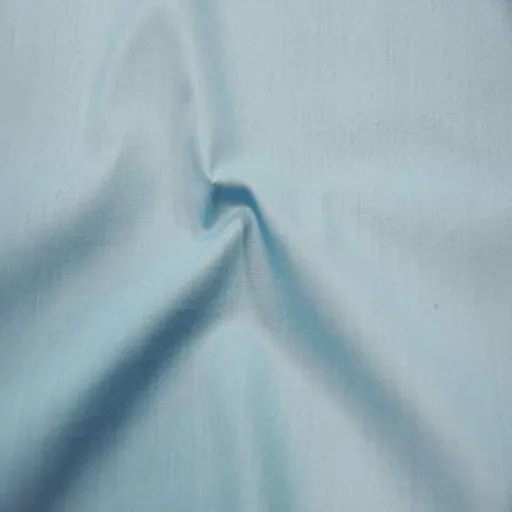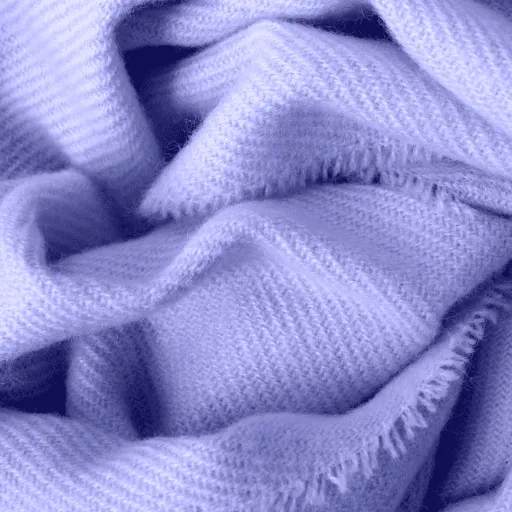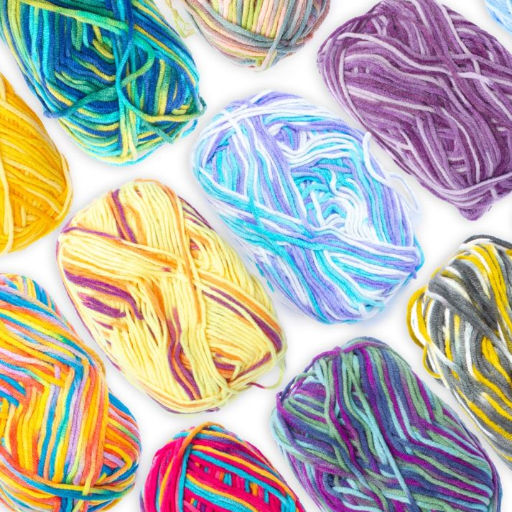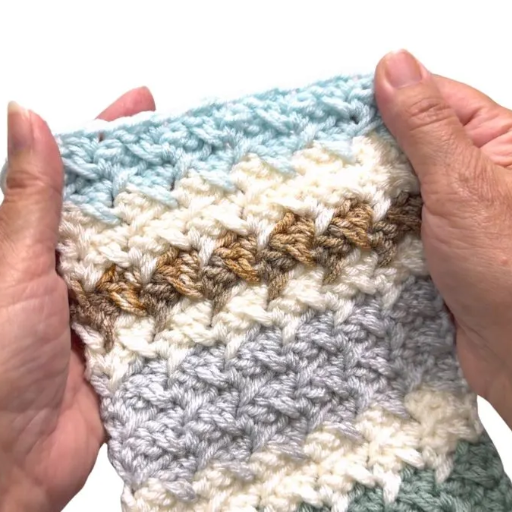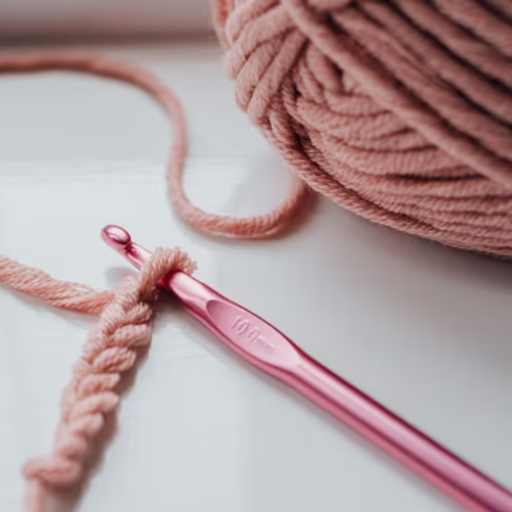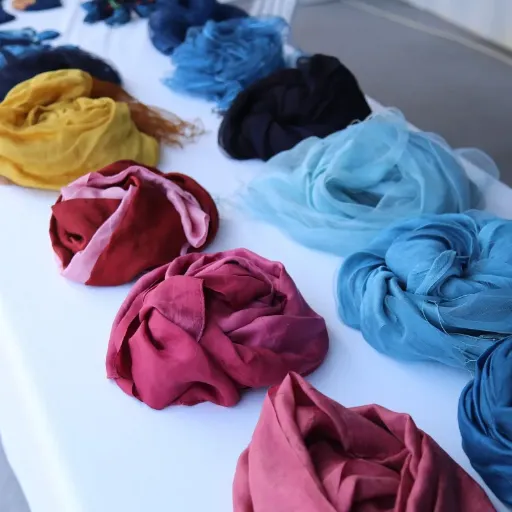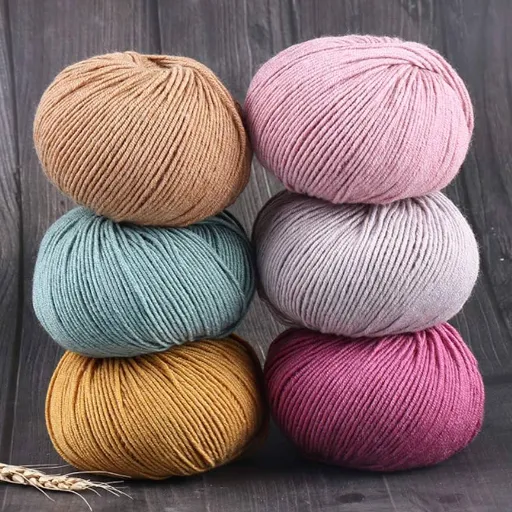Fabrics are of different types and knowing the properties and different blends’ advantages is a must, especially in today’s wide-ranging textile industry. Poly cotton, commonly known as the cotton polyester blend fabric, is a combination of all the good features that both of the fabrics can provide—offering the natural softness and the breathing property of cotton along with the durability and the tough nature of polyester. However, what makes poly cotton different from pure polyester or other fabric types? In this blog post, we will take you to an amazing journey of cotton polyester blends revealing their special features, practical usages, and the reasons for their popularity in the fashion and textile industries. Whether you are a designer, a manufacturer, or just fabric curious, this guide will provide you with the clarity needed to make wise decisions.
Understanding Cotton Polyester Blend Fabric
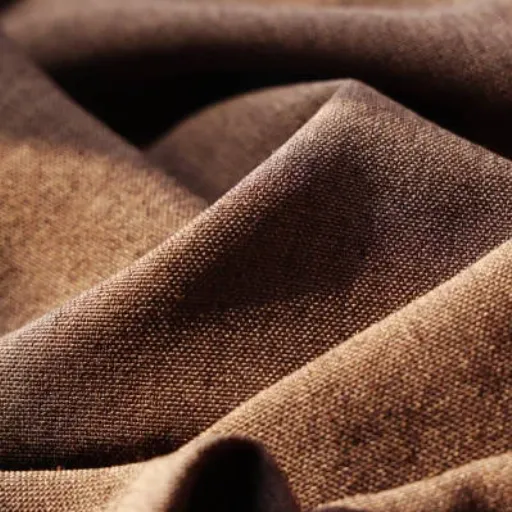
What is a Cotton Polyester Blend?
The blending of cotton and polyester fibers gives rise to a cotton polyester blend which is a fabric composed by both substances. The composition of these blends is commonly in between the two fibers in different ratios, such as 50/50 or 65/35. However, there are other variations available that depend on the desired characteristics as well. The end product is a textile that has both natural and synthetic qualities intertwined through either weaving or knitting.
Cotton’s natural fibers come with soothing, cool and comfortable properties that one can wear for long periods. In contrast, polyester enhances the fabric with its durability, non-wrinkling and moisture-wicking properties. The combination of fibers results in a fabric that is lightweight yet strong, resistant to shrinkage and easy to maintain. These benefits are the reasons why cotton polyester blends are widely used in the making of clothes, home furnishings, and even for industrial applications.
The blend’s flexibility is one of the primary reasons it has become widely used. Cotton polyester blends are capable of producing a myriad of products as their main function includes but is not limited to: t-shirts, bedsheets, and work uniforms. After many washes, the blend still keeps its shape, and compared to pure cotton fabrics, it requires very little ironing. Besides, with proper care the cotton-polyester blend is a durable and sustainable option in the fashion and textile industries.
The History and Evolution of Poly Cotton
Poly cotton had never been seen before, the fabric was produced through the union of polyester and cotton, until the middle of the twentieth century. Polyester was a chemical fiber that had been introduced in the 1940s and one of its properties that was very much appreciated was that it was very long-lasting and would hardly ever need caring for. However, it could not compete with the natural fibers when it came to softness and breathing ability of the skin. Blending of cotton and polyester was one of the brilliant solutions in the textile world that produced a new fabric which was soft and comfortable with the other great quality of being resistant and durable to the wearing, washing and even ironing process.
The late 60s and the 70s were decades when the fashion and textile industries experienced a dramatic increase in the popularity of poly cotton. The characteristic of its blended nature leading to the fineness of the fabric was the ideal solution in the day-to-day operation where maintenance was not so much and the fabric life was longer than pure cotton. Manufacturers began to cover the whole range of products, from casual wear to home textiles, as the qualities of the fabric and production on an industrial scale were already easy to manage and widespread.
The advancement of time saw the technology in the textile industry achieving further enhancement in the quality of poly cotton blends. Besides new weaving methods and fiber processing, there was a wider variety of textures, weights, and finishes that made it possible for poly cotton to be so versatile that adapting to modern style and trend was no pain at all. Almost everywhere poly cotton has found use it is still the leader and the most economical option while it is the strongest and best quality hybrid in fibers; it is also the most friendly to the changing requirements of the modern consumers and industries.
Why Blending Cotton and Polyester Matters
The blending of cotton and polyester is a crucial process as it merges the good characteristics of both fibers thereby giving a mixture of comfort, durability, and versatility. Cotton is imbued with such traits as softness, high permeability, and a natural look thus it becomes a good material for daily. Polyester, however, is a fiber whose worth is mainly derived from its strength, moisture-wicking property, as well as resistance to creasing and shrinkage. Then when these two are mixed, the fabric made out of such a blend will have all those mentioned characteristics of the two materials and thus improving its performance and function.
Another major advantage of cotton and polyester blends among others is that they are long-lasting and need little care. The blending of polyester which is a synthetic fiber imparts strength to the fabric and makes it even more resistant to damage while cotton continues to do its job of providing consumers with the most wanted soft and breathable fabric. This is why the blend is fit for most usage including the making of daily garments and even industrial clothes. The shrinking and wrinkling of the blend are less than that of pure cotton, thus less care and maintenance will be required which is a very important aspect for busy people’s lifestyles.
The combination of cotton-polyester fibers aids design and usage versatility. The fabric can be produced at different weights, textures, and finishes thus it can serve everything from light summer clothes to tough workwear. The blending also has good acceptance in dyeing and printing thus it is very accommodating in terms of styles and fashions. By combining natural and artificial fibers, this hybrid material can fulfill the ever-changing demands of modern consumers thus securing its place as a favorite across industries.
Key Features of Cotton Polyester Fabrics

Durability and Longevity of the Blend
The Cotton polyester fabric is mainly acknowledged for its unmatched durability, which makes it possible to use the fabric in many areas. The polyester part imparts strength and resilience to the blend allowing it to be more wear and tear resistant than pure cotton. This property keeps the fabric solid and that is why it is mainly used in the production of items that undergo heavy use or frequent washes.
The fabric’s resistance to shrinking, stretching, and wrinkling is another main factor that results in the fabric’s long life. Cotton that is 100% can shrink considerably after washing; however, the polyester fibers in the blend help to maintain the size and shape of the fabric. This resistance to deformation makes cotton polyester a practical material for wearing and items that go through regular maintenance and handling.
Besides, the blend’s ability to keep the color and resist fading is another factor of its longevity. The polyester fibers assimilate the dyes in a more effective way thus the colors are still vibrant even after a long time. These characteristics together with the strength and resistance to damage make cotton polyester a perfect option for consumers who are after durable and flexible fabrics.
Cotton-Polyester Blend: The Source of Everyday Comfort and Versatility
The material pattern of cotton and polyester is widely recognized for its high comfort level and versatility, thus it becomes a popular choice for daily use. The cotton part of the mixture gives the fabric a soft and breathable quality, which in turn, is a skin-friendly option. As a result, the blend is perfect for making clothing and textiles that can be worn for long hours even in hot or humid conditions. The addition of polyester, however, gives its own contribution which is structure and strength, thus enabling the mixture to retain its shape and form over a long time period.
The ability to use this material in so many different ways is one of its most important benefits. It is often seen in a lot of places, easy-going or even formal outfits, and homeware as in linens and upholstery. Being light yet sturdy allows this fabric to be made into activewear and clothes for everyday use. Moreover, it can be cut and sewn into various styles and designs that suit different people’s tastes and occasions, thus being very flexible.
Along with being very practical, a cotton-polyester blend is really maintenance-friendly. It hardly needs any care compared to some other materials, mainly because it doesn’t get creases and won’t shrink. So, it is a fabric that fits in very well with fast-paced lifestyles and at the same time, its sturdiness guarantees that quality will be preserved even after multiple washes. All in all, the cotton-polyester blend is the ultimate combination of comfort, functionality, and low-maintenance care, providing an all-in-one solution for daily requirements.
Resistance to Wrinkles and Shrinkage
Cotton-polyester fabrics are very resistant to both wrinkles and shrinkage, and hence they are an excellent option for daily use and home textiles. The polyester part is the one that is the most durable and retains shape; thus, it is the one that minimizes wrinkles and prevents shrinkage the most. This ability ensures that not only garments but also fabrics will keep a crisp, neat look with no need for constant ironing or special care.
Moreover, this cotton-polyester blend embraces and even surpasses the customers’ expectations regarding the drawbacks of pure cotton, which easily gets wrinkly and shrinks. The combination of cotton’s softness and high breathability with polyester’s strength results in a fabric that not only favors convenience but also longevity. Consequently, cotton-polyester blends are especially attractive for people having busy lifestyles or they are suitable for environments where easy-to-maintain materials are required.
However, for the best results, it is still advisable to follow the care instructions properly, such as washing in cold or warm water and not using high-heat drying cycles. These measures are to help keep the fabric’s integrity over time and to further enhance its wrinkle and shrinkage resistance. All in all, cotton-polyester blends are a marvelous choice for people wanting practical and maintenance-free materials.
Comparing Poly Cotton and 100% Polyester
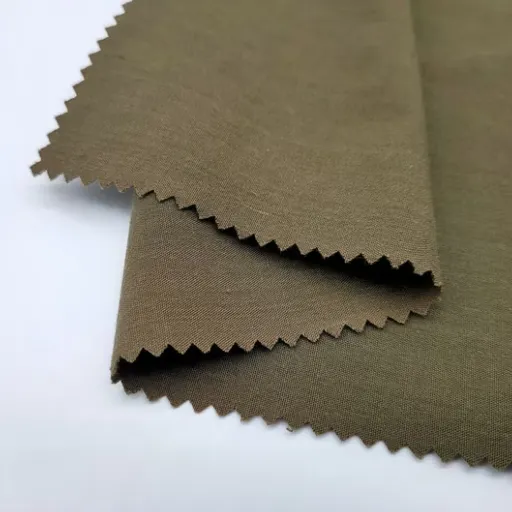
| Comparison Factor | Poly Cotton Blend | 100% Polyester |
|---|---|---|
| Texture | Soft, breathable, natural feel | Smooth, uniform, synthetic feel |
| Breathability | Moderate to high | Lower breathability |
| Cost | Moderate price point | Most affordable option |
| Environmental Impact | Better biodegradability than pure polyester | Non-biodegradable, microplastic pollution |
Texture and Feel: Natural vs. Synthetic
Polyester and cotton blends and pure polyester fabrics are the most different ones when it comes to texture and feel, and this is due to the fabrics used in their making. Blending cotton and synthetic polyester, poly-cotton allows the user to enjoy a slightly crispy soft texture that is breathable and very pleasant to the skin. The very mixing of polyester’s smoothness and cotton’s natural softness gives a balanced fabric that is comfortable for daily wear and thus, has found its use in garments and household items, being the most preferred one by consumers for this very reason.
Conversely, fabrics made of 100% polyester are all composed of synthetic fibers leading to an even more uniform and smoother sensation. The texture of polyester sometimes tends to be regarded as less breathable than that of cotton-based blends, however, it is still conquering with its sleekness and toughness. It is often employed in situations where the demand for a lightweight material that is also wrinkle-resistant, moisture-wicking is high, especially among sports apparel. Yet, there are some individuals for whom the synthetic quality of polyester is noticeable and thus they may not find it as cuddly as cotton.
To sum up, the selection between poly cotton and fully polyester eventually leads to a matter of personal preferences and the use of fabric. However, if you put major emphasis on breathability and the feel of a fabric next to the skin, poly cotton is the right choice. In contrast, if you prioritize a smooth texture, durability, and easy care, 100% polyester is likely the best option. Knowing these main differences allows you to choose the fabric that will serve your needs the most.
Cost and Affordability: Which is Better?
Polyester is usually the more affordable fabric when assessed based on cost and affordability. The fact that it is a fully synthetic material lowers the prices of its production thanks to the use of cheaper methods, consequently, consumers pay less for it. This feature makes polyester a material of choice for customers who are looking for cheap options that do not compromise on durability.
On the contrary, poly cotton blends and pure cotton can be less costly for the reason that the nature of the fibers used in cotton is the main factor contributing to their price. The mix brings along the comfort and breathability qualities of cotton which, in fact, is the reason for its higher overall quality and cost. However, poly cotton still holds its ground as a reasonably priced alternative to 100% cotton, thus it can be considered as a well-rounded option when it comes to affordability and comfort.
In the end, the choice will be based on personal preferences. If affordability is the number one priority then polyester gets the gold medal without question. Poly cotton is for those who want to spend just a little bit more for the extra comfort and breathability, as it is the right place in between. Both materials are easy to get and very affordable and thus they will fit within your budget no matter what it is.
Environmental Considerations of Each Fabric
Polyester is a synthetic fabric that comes from petroleum and its production process is greatly dependent on fossil fuels, which are non-renewable resources. This is a major cause of greenhouse gas emissions and environmental pollution. Besides, polyester is non-biodegradable, thus it can remain in ecosystems for centuries, creating long-lasting waste. On the other hand, washing polyester fabrics causes the release of microplastics into rivers and lakes, which are dangerous to marine life and can also get into the food chain.
Poly-cotton blends consist of cotton fibers and polyester fibers mixed together. The cotton part leads to better biodegradability than pure polyester, but the cotton plant usually has the drawback of requiring large amounts of water and pesticides. These factors can negatively affect the local ecosystem and cause water shortages. Besides, incorporating polyester into the mixture brings many of the same environmental issues as pure polyester like microplastic pollution and fossil fuel dependency.
When considering the environment, both textiles are disruptive, but the earth’s natural composition of cotton gives a slightly better scenario in terms of biodegradability and plastic pollution reduction. Nevertheless, going for sustainable and ethical poly-cotton or polyester, namely, fabrics that are composed of recycled materials or made with eco-friendly practices, can be a way to lessen the environmental impact of these fabrics. Selecting fabrics with sustainability at the forefront remains a small yet powerful step in curtailing environmental damage.
Popular Applications of Cotton Polyester Blends
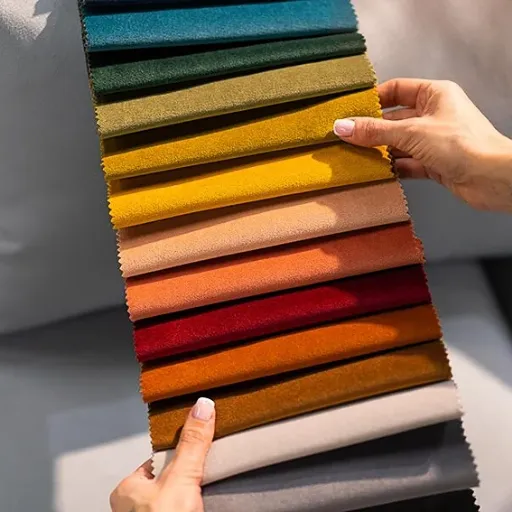
Fashion Industry: From Casual Wear to Sportswear
The combination of cotton and polyester is one of the fabrics that are most favored in the fashion industry, and the reason for it is the unique combination of properties that the blend has. The fabric mixture consists of the soft and skin-friendly cotton, the natural moisture-wicking and quick-drying polyester, and therefore, it is very suitable not only for humid climates but also for warm one in general. The fabric is very soft to the skin, has good wrinkle resistance, and keeps its shape even after many washes, which makes it very popular in the production of casual wear, hence, getting rid of the possibility of making uncomfortable and non-durable clothes.
Casual wear is the area where cotton-polyester blends are most commonly found in T-shirts, dresses, and everyday clothing that are the coolest and easiest to take care of. The fabrics are very light yet very durable at the same time and hence they are perfect for daily use. Even more, the cotton and polyester receiving the different percentages in the mix would result in the fabrics having different properties such as cotton being softened and polyester being made resistant, depending on the application.
In the case of sportswear, cotton-polyester blends are the very best because of their performance which is not the same as any other feature they have. Polyester speeds up the moisture-wicking process giving the body the cooling and drying effect which is essential during exercise. At the same time, cotton contributes to the good feeling by lessening the rubbing and thus being less irritant which is why it is used in active wear such as leggings, etc. This situation wherein comfort and functionality are balanced makes it possible for both the athletes and the casual fitness enthusiast to keep exercising and at the same time feel comfortable.
Home Textiles: Sheets, Curtains, and More
Home textiles are sheets, curtains, and other similar items that greatly affect the livability and attractiveness of a home. They provide comfort and utility while at the same time boosting the design and the image of the living areas. For example, sheets are the most important bedding item. They make the mattress cover and ensure a soft sleep with soft, breathable, and durable cotton, linen, or mixed fibers as the source of the softness. To illustrate the case, curtains, on the other hand, provide several functions such as light controlling, privacy securing, and the decoration of the room becoming even more gorgeous.
Considering home textiles, the selection of the material is a great factor to be taken into account. Natural materials such as cotton and silk are the most common choice considering their softness and breathability, while synthetic materials like polyester are preferred for their durability and not being expensive. Curtains also help in giving the opportunity to experiment with textures and colors which are the overall theme of your room. Sheer curtains allow natural light in and still keep the room light and airy, while heavy drapes can not only block light completely but at the same time create a sense of luxury in the room.
Home textiles’ maintenance and care are the key factors to their long life. Bedrooms and bathrooms need to be regularly cleaned and maintained to prevent the growth of dust and the accumulation of allergens. To keep the cleaning of such items as sheets and curtains easier, it is suggested that you choose machine-washable ones to use regularly, while delicate items might need hand-washing or professional cleaning. Proper care helps to keep the functionality and the appearance of these daily-use items, thus contributing to an environment that is both comfortable and stylish.
Caring for Cotton Polyester Fabrics
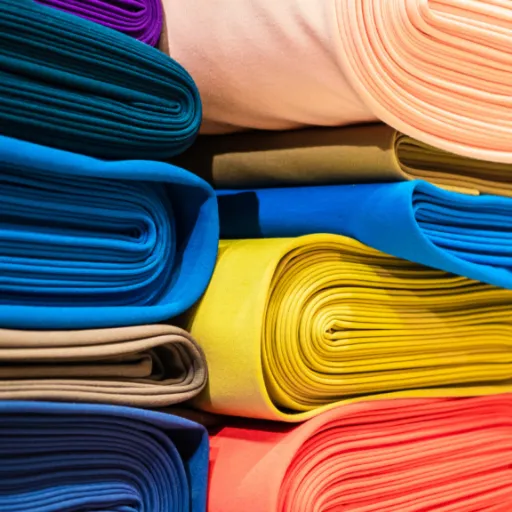
Washing and Drying Guidelines for Blended Fabrics
Proper care for cotton polyester fabrics ensures they maintain their durability and appearance over time. Here are detailed washing and drying guidelines based on best practices and the latest information:
Washing Guidelines:
- Ideal Water Temperature: Cotton polyester blends can typically be washed in warm water (around 40°C or 104°F). For heavily soiled items, hot water may be used, but avoid exceeding 60°C (140°F) as excessive heat can damage the fibers.
- Detergent Use: Use a mild detergent suitable for synthetic-blend fabrics. Avoid harsh detergents or bleach, as they can weaken the polyester fibers and cause fading over time.
- Sorting: Always separate blended fabrics by color to prevent dye transfer. Wash light-colored or white blends separately from darker garments.
- Spin Cycle: Choose a gentle or medium spin cycle to prevent unnecessary strain on the fabric.
Drying Guidelines:
- Avoid Overheating: Use a low-to-medium heat setting when tumble drying cotton polyester fabrics. Excessive heat can cause shrinkage or weaken the polyester component.
- Air Drying Option: For best results and energy efficiency, air dry blended fabrics. Hanging or laying them flat to dry can help preserve the fabric’s integrity and reduce wrinkles.
- Remove Promptly: If using a dryer, remove the items immediately after the cycle ends to prevent deep-set wrinkles. Shake the garments gently and hang them to cool down.
Ironing Tips:
- Set the iron to a low or synthetic setting (often labeled as “polyester” on many irons). High heat may scorch the blended material.
- To avoid direct contact between the iron and fabric, use a thin pressing cloth for protection.
Additional Care Advice:
- Stain Removal: Treat stains immediately with a stain remover designed for synthetic blends. Dab the area gently—do not rub, as this may spread the stain.
- Special Notes for Sensitive Items: Delicate items such as curtains or thin fabrics made from cotton polyester blends should be placed in a mesh laundry bag for added protection during the wash cycle.
By following these detailed care instructions, cotton polyester fabrics can retain their vibrant colors, resilience, and comfort, extending the life of your clothing, home textiles, and industrial products.
Tips to Prevent Fading and Pilling
To avoid fading and pilling in cotton polyester fabrics, you need to combine proper handling with correct washing and storage practices. The following tips are practical and based on data and insights:
- Wash in Cold Water:
Garments washed in cold water greatly reduce the chance of fading. Cold water washing is said to preserve the fabric dyes up to 30% better than warm or hot water washing cycles. Moreover, washing with cold water helps to keep the fibers intact and thus reduces the surface abrasions that cause pilling.
- Turn Garments Inside Out:
Always turn the clothing printed or dyed on the outside inside out before washing. This will lessen the direct contact of the fabric with the machine drum and thus will prevent abrasion and will protect the external appearance.
- Opt for Gentle Detergents:
Use only those detergents that are specifically made for color protection and gentle cleaning. Stay away from harsh chemicals, as they can quicken the process of dye breakdown and fabric wear. According to a recent study, the use of color-safe detergents can keep the vibrancy of fabrics for almost 15% longer than usual.
- Avoid Overloading the Washer:
Overloading the washer causes friction between garments which, in turn, makes pilling very likely. Make sure there is enough space for the garments in the drum so that they are allowed to move freely. Best results can be achieved if the machine’s capacity guidelines are followed.
- Air Dry or Use Low Heat:
Heat from tumble dryers can make the fibers weaker and thus, the colors will fade faster and the pilling will be encouraged. Whenever it is possible, air-dry garments or run the dryer on its low-heat setting. If a dryer is used, add a fabric softener or drying sheets to minimize the friction between fibers.
- Store Fabrics Properly:
Make fabric life longer by folding items carefully and placing them in a dark area away from sunlight, as the latter can bleach colors over time. If you are going to store them for a long time, use breathable garment bags to keep the moisture out which could result in fiber degradation.
- Invest in High-Quality Fabrics:
Selecting high-quality cotton polyester blends with high thread counts or tight weaves can not only reduce the chance for pilling but also increase the resistance to fading even when washed many times. Studies show that fabrics with superior finishing processes maintain 20-25% more durability than the standard blends.
These best practices if adapted along with keeping yourself updated about the latest advancements in textile care will greatly aid in preserving the look and lifespan of your cotton polyester fabrics.
Best Practices for Ironing and Stain Removal
When ironing cotton polyester fabrics, it is very important to use the right heat setting in order to prevent any damage. For that reason, set your iron to a low to medium heat, since a high temperature scorches the polyester fibers. And, if you want to take an additional precaution, putting a pressing cloth between the iron and the fabric is a very good idea as it protects the fabric from direct heat. Nevertheless, it is very important to move the iron very gently and not hold it in one place for too long, otherwise there might be unwanted marks or burns.
When it comes to stain removal, taking quick action is very important so that the stain does not set on the fabric. Start by gently blotting the stained area with a clean cloth to soak up the excess liquid. Please remember that rubbing the stain can spread it or damage the fiber, so avoid it. Then, use a mild detergent or a vinegar and water solution to clean the spot. Make sure that any cleaning solution is tested on a small and inconspicuous area of the fabric first to make sure that it does not cause discoloration or damage.
In order to keep the fabric’s integrity, always adhere to the care instructions given on the garment’s label. Washing the fabric before ironing or treating stains often makes it easier to manage stubborn spots. Proper handling during ironing and stain removal not only preserves the appearance of the fabric but also significantly extends its lifespan.
Frequently Asked Questions (FAQ)
Q: What exactly is cotton polyester?
A: Cotton polyester refers to a fabric blend made of natural cotton fibers and synthetic polyester fibers. Thus the combination brings together the comfort and moisture soaking ability of cotton, and at the same time, it is tough and does not require ironing, which is the case with polyester.
Q: What criteria should I base my decision on when choosing cotton or polyester fabric?
A: The right choice between cotton or polyester depends on factors like how soft, breathable the fabric is, and what it is going to be used for. Cotton is the best option for comfort, while polyester will last longer with less chance of shrinking. A cotton-polyester mix can present the ideal solution with the advantages of both fibers.
Q: What are the reasons for the preference for polyester-cotton blend?
A: Taking both fibers into account, a polyester-cotton blend fabric is durable, non-iron, and allows air circulation to some extent as well as it has the foldability of both. It is thus applicable in a wide range of products from everyday hoodies to bed linens.
Q: Is using recycled polyester fabric a wise idea?
A: Yes, recycling polyester is not only an eco-friendly but also an economical solution. The mixture with cotton does help in creating a fabric that has the same characteristics as cotton (for example, softness and air permeability) but that is also eco-friendly.
Q: Does cotton polyester possess the property of moisture absorption like cotton?
A: The answer is affirmative; however, the degree of absorption depends on the polyester percentage in the fabric. Fabrics consisting mainly of cotton are very good at absorbing moisture.
Q: What are the different types of cotton fabric suitable for garment making?
A: There is an extraordinary variety of cotton fabrics, such as twill, eyelet and lightweight cotton cloth fabrics that can be used for making clothes. Furthermore, cotton fabric by the yard is very much sought after for DIY projects because it gives you the opportunity to choose the exact fabric that will best suit your needs.
Q: What is the comparison of polyester’s durability and wrinkle resistance with that of cotton?
A: The lifecycle of polyester clothing is longer because polyester is resistant to wear and tear and it also does not require much ironing, whereas cotton though is very comfortable but it gets wrinkled easily and thus needs to be treated.
Q: What is cotton’s superiority in terms of softness and breathability over polyester?
A: Cotton is bold and its non-iron attribute is making it the best for sleeping and dressing. Its synthetic counterpart, though tough, is not on the same level as far as breathability is concerned which is why many people choose cotton or a cotton-polyester blend for comfort.
Q: Where is the best place to find and buy cotton polyester products?
A: Fabric shops, online retailers, and specially-designed stores that highlight their focus on sustainable cotton and blends are all good places to shop for cotton polyester fabrics and products. Be sure to look for those that emphasize the fabrics’ durability, comfort, and breathability.
Q: Which is more advantageous, cotton or polyester clothing?
A: It really comes down to individual choice and application. Thus, cotton clothes are liked for their soft touch and breathability, whereas polyester ones are chosen for their strength and not needing ironing. Cotton-polyester blends can be a compromise between the two qualities.
References
-
Merchize: Cotton Polyester Blend Explained – Discusses the properties, pros, cons, and applications of cotton polyester blends.
-
Reddit: Why is Polyester Often Added to Cotton Cloth? – Explains why polyester is blended with cotton, focusing on fiber properties.
-
Glory Allan: Choosing the Right Fabric – 100% Cotton vs. Poly Cotton – Compares 100% cotton and poly cotton fabrics, highlighting their differences in breathability, durability, and softness.








